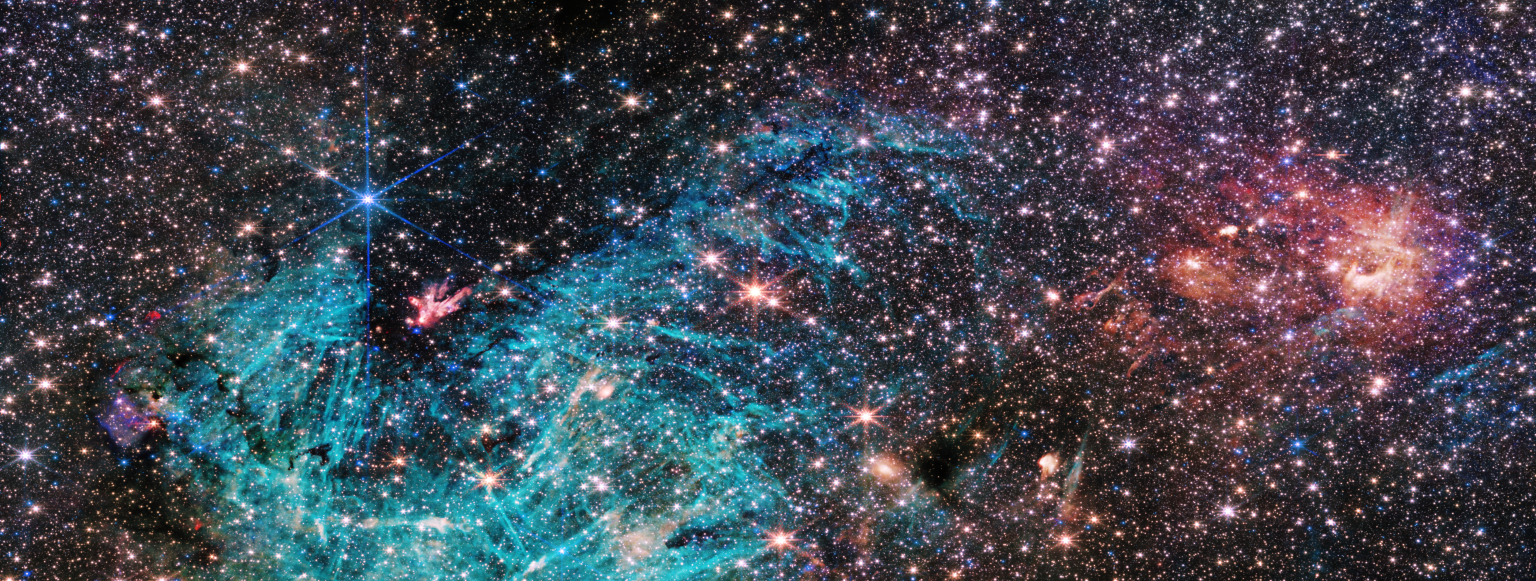
JWST Peers Into Major Star Factory Near Our Galaxy’s Core
Share
The James Webb Space Telescope, renowned for capturing distant galaxies, has turned its gaze toward the core of our own Milky Way, revealing astonishing details of ongoing activities and vigorous star formation. In contrast to the Hubble telescope, the Webb operates in the infrared spectrum, allowing it to penetrate dense cosmic gas clouds and provide unparalleled cosmic imagery.
This cosmic exploration focused on Sagittarius C (Sgr C), a region approximately 25,000 light-years from Earth, known for intense star formation. The Near-Infrared Camera (NIRCam) instrument on the Webb telescope captured unprecedented details, shedding light on the heart of the Milky Way.

Key features of the Webb telescope's observation include:
Half a Million Stars: The image showcases an estimated 500,000 stars in the Sagittarius C region, along with yet-to-be-identified features.
Protostar Cluster: A bright pink amorphous shape at the centre-left represents a cluster of protostars—developing stars. The cluster houses a massive protostar over 30 times the mass of our Sun, surrounded by a dense cloud that conceals stars behind it, creating the appearance of a less crowded space.
Chaotic Gas Region: A vast region coloured cyan spans approximately 25 light-years and consists of hydrogen gas with needle-like structures lacking uniform orientation. Scientists are intrigued by the formation processes driving this expansive gaseous cloud.
The Galactic Centre, with Sagittarius A* at its core (a supermassive black hole), wasn't featured in this observation. Sagittarius A* harbours the mass of about 4 million suns.
The James Webb Space Telescope, a collaborative effort by NASA, the European Space Agency (ESA), and the Canadian Space Agency, boasts a giant mirror over 21 feet across, capturing more light than the Hubble telescope. Its primary focus is on infrared views, penetrating cosmic clouds more efficiently than visible light. This capability allows the Webb to explore distant galaxies and stars formed over 13 billion years ago, shortly after the Big Bang.
The Webb telescope's infrared vision plays a pivotal role in unravelling cosmic mysteries, peering into distant exoplanets, deciphering atmospheric compositions, and providing unprecedented insights into regions like the Galactic Centre. As it continues its mission, the Webb telescope promises to revolutionise our understanding of the cosmos and unveil hidden celestial wonders.
You’ve come this far…
Why not venture a little further into A.S.S. - our exclusive Australian Space Society.
And keep thrusting Australia into the deep unknown…
#Space_Aus




